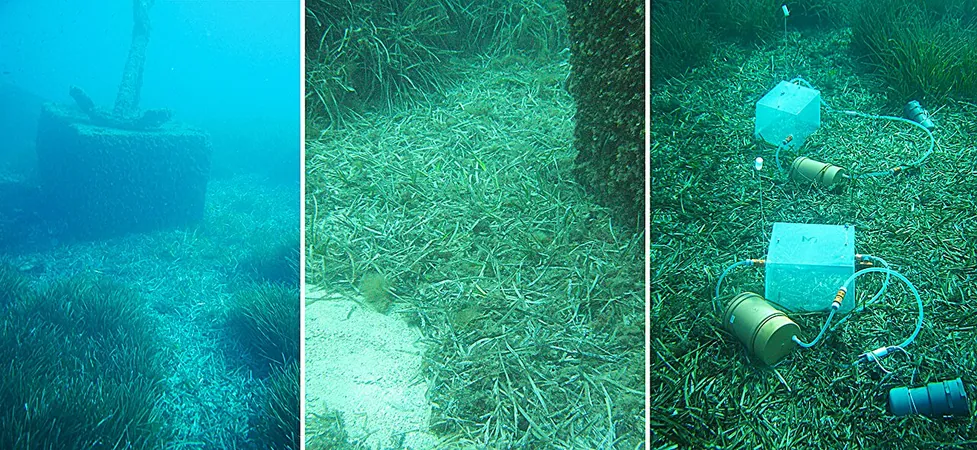
Dead Leaves in the Mediterranean Sea Transform into Oxygen-Producing Compost, Unveiling Hidden Ecological Benefits!
2024-10-07
Author: Yu
Introduction
Recent research from the University of Liège has revealed a surprising ecological phenomenon occurring in the Mediterranean Sea. Teams studied the decaying materials from the striking Posidonia seagrass meadows, commonly known as Neptune grass. Their findings indicate that the dead leaves of this flowering plant, which flourish in shallow waters, decompose similarly to compost, releasing vital nutrients and surprisingly, oxygen.
Research Background
Conducted at the STARESO marine research station in Calvi, Corsica, the study uncovered that these dead leaves accumulate in sunlit areas, leading to a breakdown of organic matter. Unlike terrestrial compost, the underwater breakdown process is notably enhanced by photosynthetic organisms inhabiting the decaying plant litter. Alberto Borges, an oceanographer involved in the research, pointed out that Posidonia is a unique terrestrial plant that adapted to marine environments millions of years ago. “These plants shed their oldest leaves in autumn, creating significant patches of organic matter at the sea floor,” Borges explained.
Oxygen Production
In a groundbreaking twist, the study measured oxygen production within the litter, attributed to the activities of floating macroalgae, detached Posidonia shoots, and microscopic diatoms. While this oxygen output is significant, it does not compensate for the oxygen consumed during the decomposition of dead leaves, highlighting the litter's dual role as a net consumer of oxygen and emitter of CO2—paralleling the dynamics seen in land-based compost.
Decomposition Rate
What raised eyebrows further was the rate at which this organic material degrades. Contrary to initial expectations that the Posidonia litter would decompose quickly, the researchers found it breaks down at a slower rate. Through precise short-term observations, the study revealed that traditional long-term measurements may exaggerate the speed of decomposition, potentially impacting existing assessments of carbon balances in these ecosystems.
Macroalgae and Posidonia Interaction
Moreover, the research delved into the interactions between macroalgae and Posidonia, indicating that the two systems are not as isolated as previously assumed. Interestingly, despite undergoing photosynthesis, the macroalgae were found to consume more oxygen than they produce, suggesting that they rely heavily on external organic matter, likely supplied by the Posidonia.
Symbiotic Relationships
This two-way exchange creates a symbiotic relationship between the macroalgae and the seagrass meadows, with macroalgae contributing to enhanced primary production within the Posidonia litter, while also benefiting from organic materials released by the seagrass.
Conclusion
Ultimately, these discoveries shed light on the intricate carbon balances and ecological dynamics of Posidonia meadows in the Bay of Calvi. Given their ecological importance as carbon sinks, ongoing research into these ecosystems could play a crucial role in better understanding their contributions to marine environments and climate change mitigation efforts.
Importance of Preservation
As we delve deeper into the marine world's hidden secrets, studies like these emphasize the importance of protecting and preserving these biodiverse underwater meadows. The findings not only elevate the ecological importance of Posidonia but also invite further exploration into our oceans' allowing us to unveil more of nature's remarkable symbiotic relationships!




 Brasil (PT)
Brasil (PT)
 Canada (EN)
Canada (EN)
 Chile (ES)
Chile (ES)
 España (ES)
España (ES)
 France (FR)
France (FR)
 Hong Kong (EN)
Hong Kong (EN)
 Italia (IT)
Italia (IT)
 日本 (JA)
日本 (JA)
 Magyarország (HU)
Magyarország (HU)
 Norge (NO)
Norge (NO)
 Polska (PL)
Polska (PL)
 Schweiz (DE)
Schweiz (DE)
 Singapore (EN)
Singapore (EN)
 Sverige (SV)
Sverige (SV)
 Suomi (FI)
Suomi (FI)
 Türkiye (TR)
Türkiye (TR)